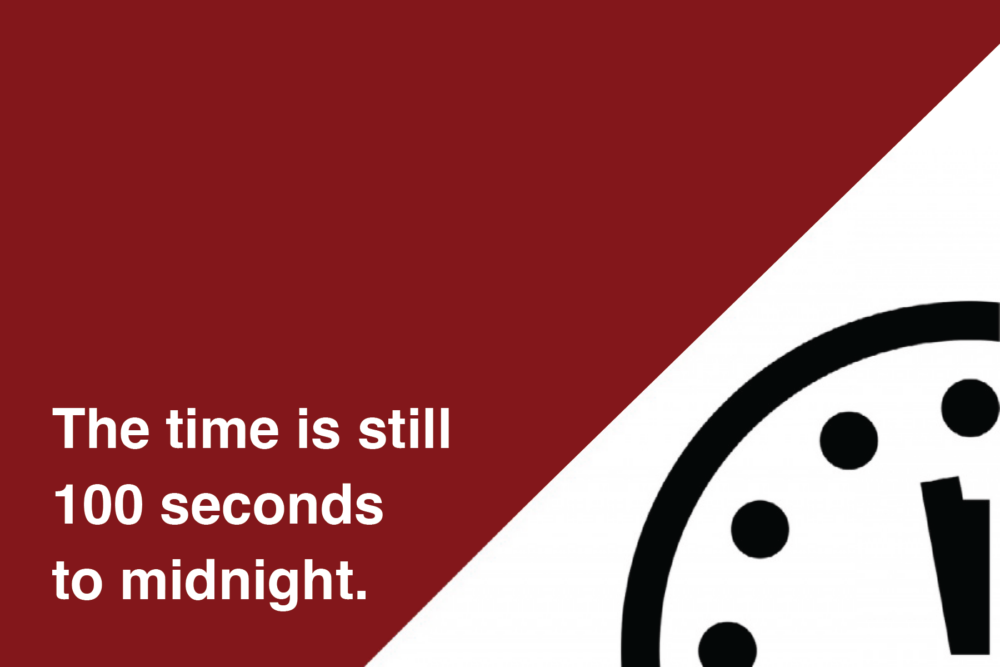
Juliet Henry
Communications Manager
Atomic Pulse
“Steady is not good news” as Doomsday Clock holds at 100 seconds to midnight.
Citing an international “mixed threat environment,” the Bulletin of the Atomic Scientists announced that its Doomsday Clock will remain at 100 seconds to midnight for the third year in a row.
This continues to be the closest time to midnight in the clock’s history.
Founded in 1947 by the Bulletin, the Doomsday Clock is an indicator of the world’s vulnerability to catastrophe from man-made threats to human existence. The clock is set annually by the Bulletin’s Science and Security Board and reflects the assessment of leading security and science experts on global threats including nuclear weapons, climate change, and disruptive technologies.
Sharon Squassoni, co-chair of the Bulletin’s Science and Security Board, warned that, “the Doomsday Clock is holding steady at 100 seconds to midnight, but steady is not good news. In fact, it reflects the judgment of the board that we are stuck in a perilous moment. One that brings neither stability nor security.”
In assessing ongoing nuclear threats, global warming, information warfare, and the Covid-19 pandemic, members of the Bulletin’s Science and Security Board found the world to be no safer today than it was at this time last year.
While the Board acknowledged that positive developments were made in 2021, such as the extension of the New START arms-control treaty between the United States and Russia and the rapid development and distribution of Covid-19 vaccines, these advancements have not managed to outweigh the longer-term negative trends that continue to erode global security.
“The Doomsday Clock continues to hover dangerously, reminding us about how much work is needed to be done to ensure a safer and healthier planet,” said Rachel Bronson, president and CEO of the Bulletin. “We must continue to push the hands of the clock away from midnight.”
The Bulletin’s statement called on political leaders to act, warning that the world is in peril of further inaction.
Sign up for our newsletter to get the latest on nuclear and biological threats.
